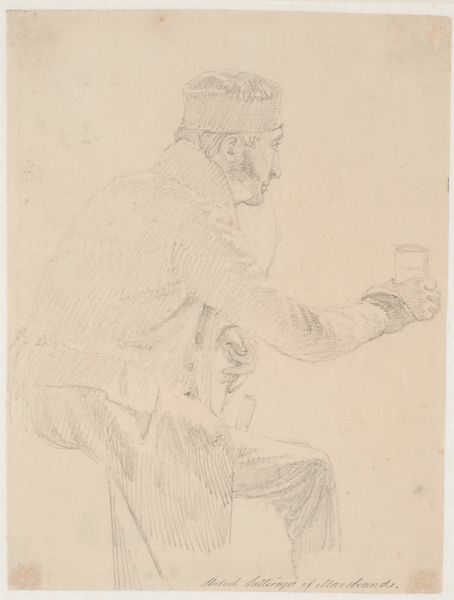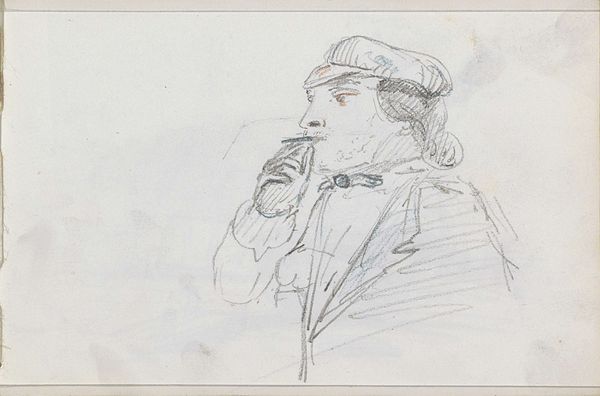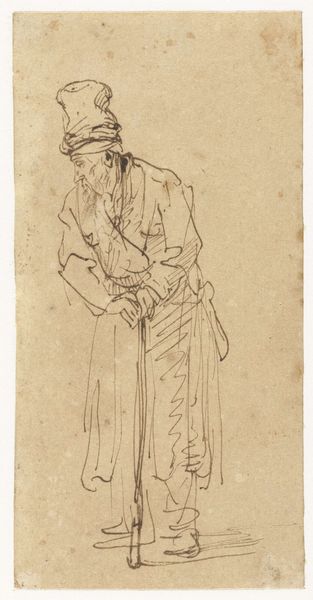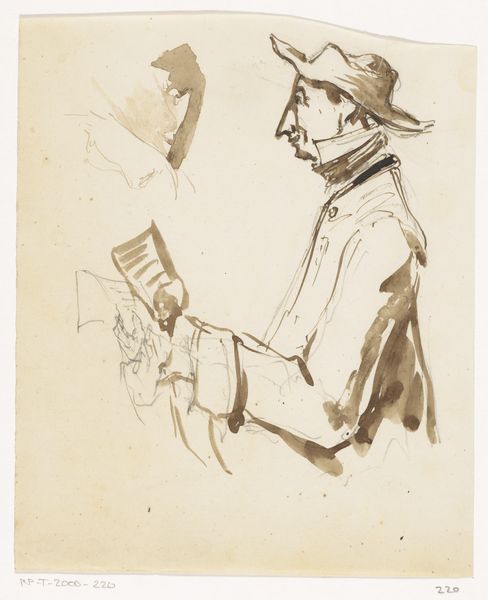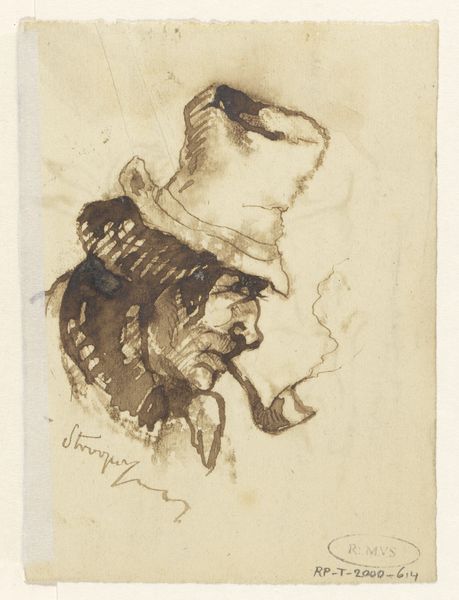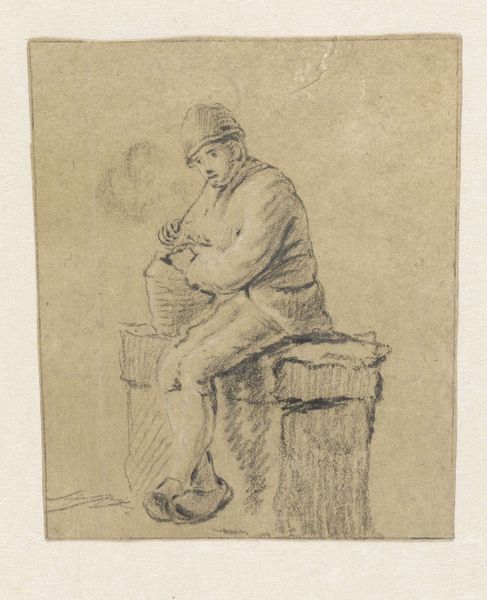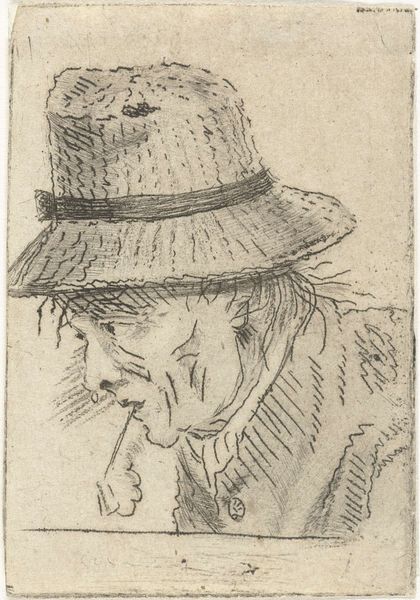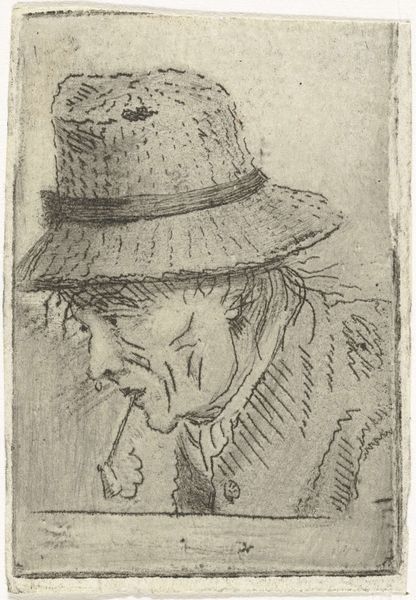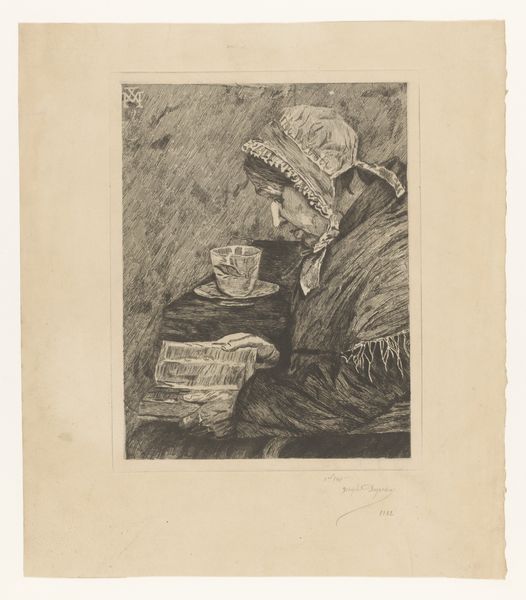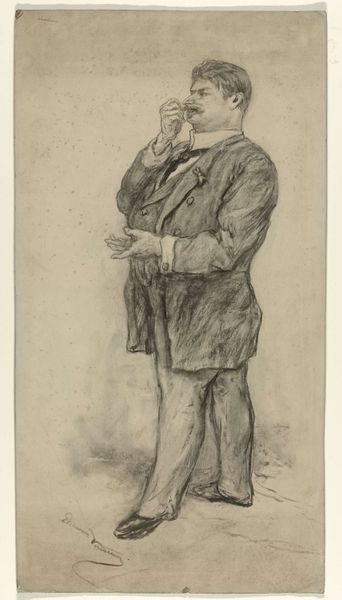
drawing, pencil
#
portrait
#
drawing
#
pencil sketch
#
figuration
#
pencil
#
expressionism
#
sketchbook drawing
#
pencil work
#
realism
Dimensions: height 201 mm, width 130 mm
Copyright: Rijks Museum: Open Domain
Curator: This piece, which hangs here in the Rijksmuseum, is titled "Accordeonist". It's a pencil drawing, dating from somewhere between 1891 and 1941, and the hand behind it belongs to Leo Gestel. What catches your eye first? Editor: There's a real somberness to it, wouldn’t you say? The figure's almost swallowed by the shadows, except for the very tip of his nose which has these almost aggressive red markings, a visual flag in a sea of grey. It makes me think about the artist's focus. Curator: Exactly. The red certainly draws me in, like a siren's call of discomfort. But the sketchy quality itself, those unfinished lines—it feels like a stolen moment, an intimacy offered before it could be fully realised. Like seeing someone on the subway platform, thinking they are a musician. You just need to keep it to yourself and wonder for a while if this figure is just an embodiment of art and society’s overlooked figures. Editor: Absolutely. There's an evident class dimension here too, isn't there? The cap, the unkempt beard—these read as signs of labour, of working-class life. Gestel capturing a particular societal stratum, perhaps in response to social stratification. I mean the accordion wasn’t exactly an instrument of the elite… Curator: Not at all. It’s fascinating how Gestel uses what seem like rough strokes to imply layers of character and experience. The eyes aren't even fully defined, yet you feel his gaze is inward, concentrated on something we can't see. Perhaps hearing music only he can appreciate in that moment. It’s beautifully melancholic, even a little comical with the exaggerated redness around his nose. A touch of clown. Editor: That tension between the melancholic and the absurd is spot on. There's a vulnerability in the posture that belies a possible narrative of economic hardship. Perhaps we can contextualise Gestel’s drawing in line with broader debates concerning art, identity, and socio-economic realities of the 20th century. Curator: Indeed. He’s captured a mood, an undercurrent of life often ignored. Thank you, I never looked at it that way before. Editor: My pleasure; always a different angle when seen in a new light.
Comments
No comments
Be the first to comment and join the conversation on the ultimate creative platform.
